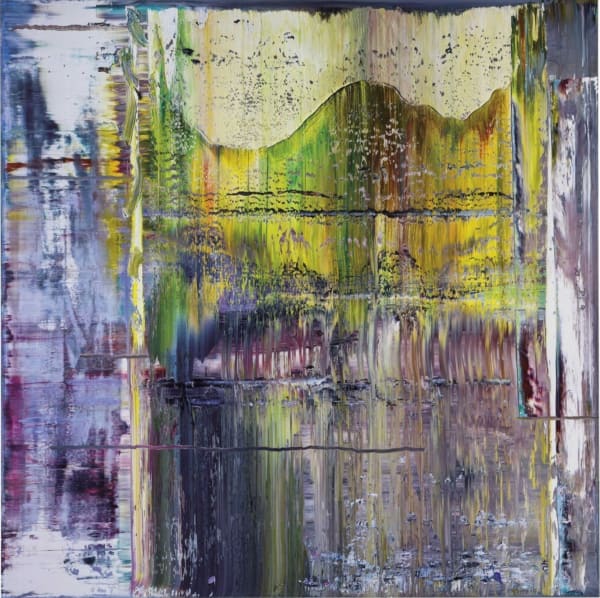Gerhard Richter
“Pictures are the idea in visual or pictorial form.”
Emerging from post-war Germany, Gerhard Richter, has explored the intersection between painting and photography, captivated by the two opposing mediums ability to converse and contradict one another. Utilising his vast archive known as Atlas, Richter’s canvases are rendered with squeegee and acerbic colour charts, to paintings of photographic detail, referencing images of his daughter, flickering candles, aerial photographs, portraits and pastoral landscapes.
Born in 1932 in Dresden, Germany, his youth traced the defining moments of 20th century history, reverberating the effects of National Socialism and the Holocaust. In the early 50s, he attended the Kunstakademie in Dresden, where he trained in Socialist Realist painting, before moving to West Germany to study avant-garde art at the Kunstakademie in Dusseldorf. During this time, he began to explore the material, conceptual and historical implications of painting without any ideological restraints.
During the 1960s, stimulated by current affairs and popular culture, Richter reimagined found and media images of military jets, portraits and aerial images. Most notable were the family pictures he had smuggled from East Germany. Through the merging of Richter’s idiosyncratic techniques, he distanced the viewer from their subjects, thus shedding doubt on the abilities of painting versus photography, as a reliable form documentation. The complex moments of personal and social history are interrogated by the conceptual and formal qualities of photographic images. Images are adjusted, cropped and manipulated.
Gerhard Richter has continued to manipulate the abilities of painting and photography throughout his career, embracing a vast array of techniques and subjects, from the highly charged to the everyday. He has held retrospectives at the Museum of Modern Art in New York and has achieved record breaking auction results, as with his ‘Abstracts Bild’, which fetched HKD 214.6 million, the highest paid for a Western artist at auction in Asia.
-

Frieze 2022
Our Top Picks 18 October 2022What did we find at Frieze 2022, here are our top picks for this year’s art fair. Blue-Chip Work Damien Hirst, Veil of Dreaming, 2017...Read more -

Frieze 2022
The Insider’s Guide To Frieze 11 October 2022As October approaches, the British art world goes into overdrive. Artists, gallerists and collectors descend on the city, attempting to keep up with a hectic...Read more





